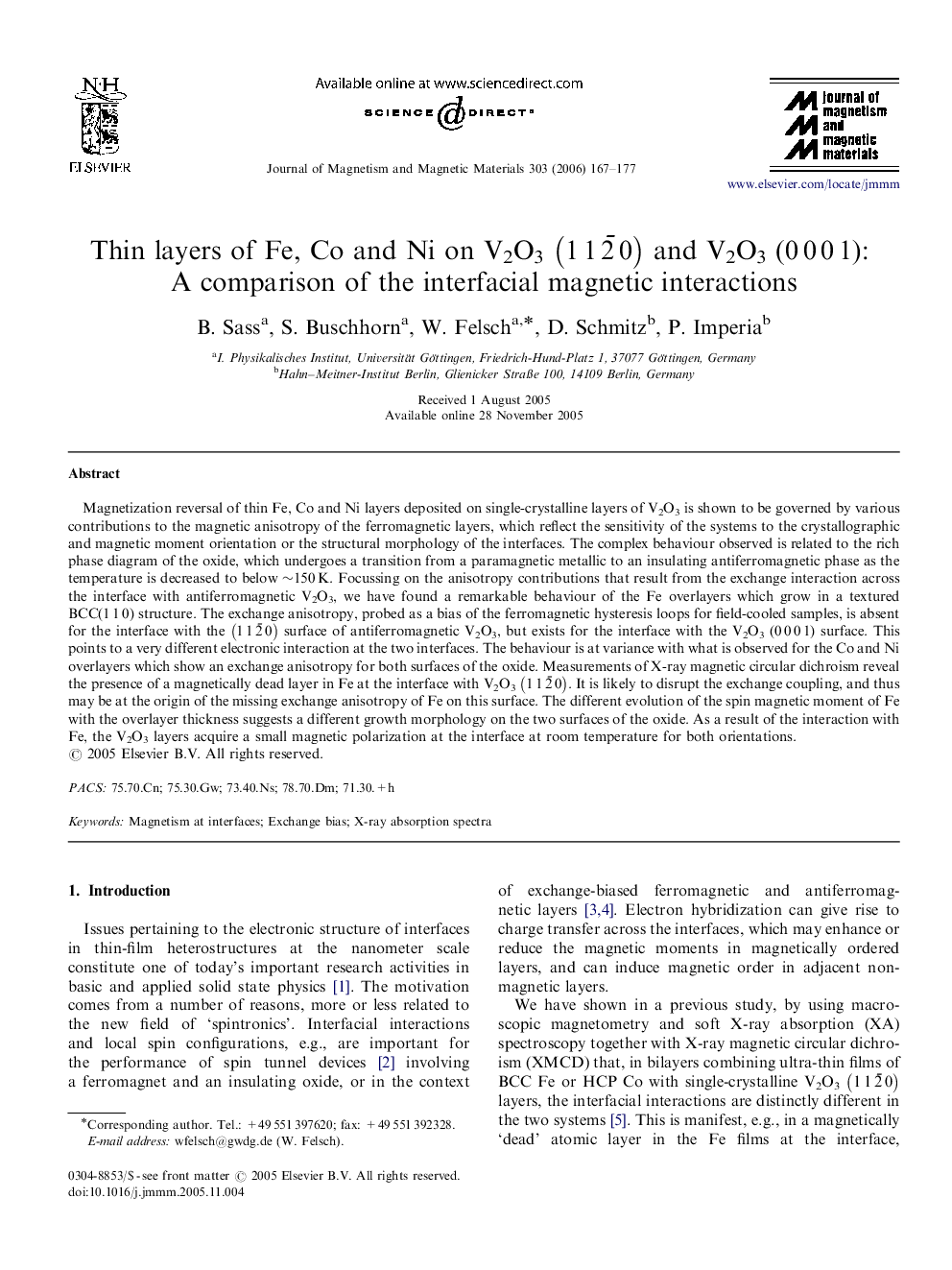| کد مقاله | کد نشریه | سال انتشار | مقاله انگلیسی | نسخه تمام متن |
|---|---|---|---|---|
| 1802884 | 1024606 | 2006 | 11 صفحه PDF | دانلود رایگان |

Magnetization reversal of thin Fe, Co and Ni layers deposited on single-crystalline layers of V2O3 is shown to be governed by various contributions to the magnetic anisotropy of the ferromagnetic layers, which reflect the sensitivity of the systems to the crystallographic and magnetic moment orientation or the structural morphology of the interfaces. The complex behaviour observed is related to the rich phase diagram of the oxide, which undergoes a transition from a paramagnetic metallic to an insulating antiferromagnetic phase as the temperature is decreased to below ∼150 K. Focussing on the anisotropy contributions that result from the exchange interaction across the interface with antiferromagnetic V2O3, we have found a remarkable behaviour of the Fe overlayers which grow in a textured BCC(1 1 0) structure. The exchange anisotropy, probed as a bias of the ferromagnetic hysteresis loops for field-cooled samples, is absent for the interface with the (112¯0) surface of antiferromagnetic V2O3, but exists for the interface with the V2O3 (0 0 0 1) surface. This points to a very different electronic interaction at the two interfaces. The behaviour is at variance with what is observed for the Co and Ni overlayers which show an exchange anisotropy for both surfaces of the oxide. Measurements of X-ray magnetic circular dichroism reveal the presence of a magnetically dead layer in Fe at the interface with V2O3(112¯0). It is likely to disrupt the exchange coupling, and thus may be at the origin of the missing exchange anisotropy of Fe on this surface. The different evolution of the spin magnetic moment of Fe with the overlayer thickness suggests a different growth morphology on the two surfaces of the oxide. As a result of the interaction with Fe, the V2O3 layers acquire a small magnetic polarization at the interface at room temperature for both orientations.
Journal: Journal of Magnetism and Magnetic Materials - Volume 303, Issue 1, August 2006, Pages 167–177